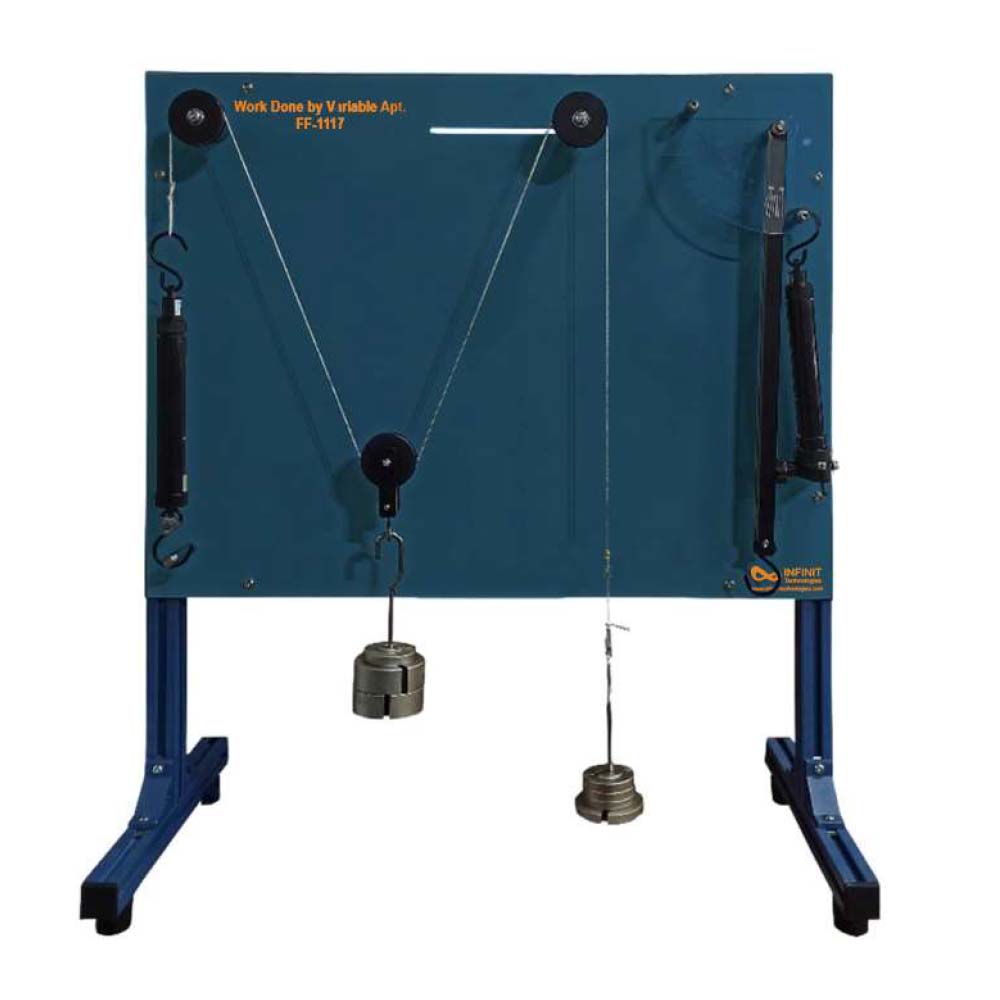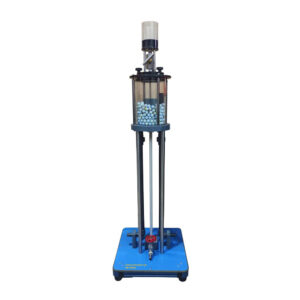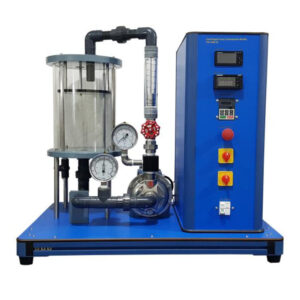This apparatus is used to practically explain to the students, the theory behind the calculation of work done by taking the area under the graph of force against distance travelled graph. The apparatus consists of an arm, a hangar, some loads, a spring balance and a support board fitted with a protractor scale. One end of the arm is fixed and its position is indicated by the protractor. Other end of arm carries the load hanger, and is restrained by spring balance that is perpendicular to the arm. Under the application of load, the movement of arm can be read easily.
Vertical Force
The apparatus is a simple lifting mechanism with obvious nonlinear characteristics. A suspension cord carrying a loaded trolley at mid span is tensioned by passing the cord over a pulley at one end and down to a weight hanger. As the vertical effort is increased, the tensioned cord will move to a new equilibrium position lifting the loaded trolley. Heights of the load and effort are measured relative to the base. All the pulleys are fitted with ball bearings to minimize friction effects.
Tangential Force
A pivoted arm carrying a load hanger at its end is restrained by a force gauge at right angles to the arm. The angular position of the arm is indicated by a protractor scale attached to the backboard. The effort is the force needed to hold the weighted arm at a particular angle. This can be repeated for several different weights.
Experiments
- To obtain the experimental relationship between effort and distance moved by effort, and to compare with a theoretical prediction.
- To show that the work done is the area under a graph of load against distance moved.
Specifications
- Table unit for experiments on mechanical work and potential energy.
- Lifting a weight using a lever and a dynamometer (spring balance).
- Integrated angle measuring scale protractor.




